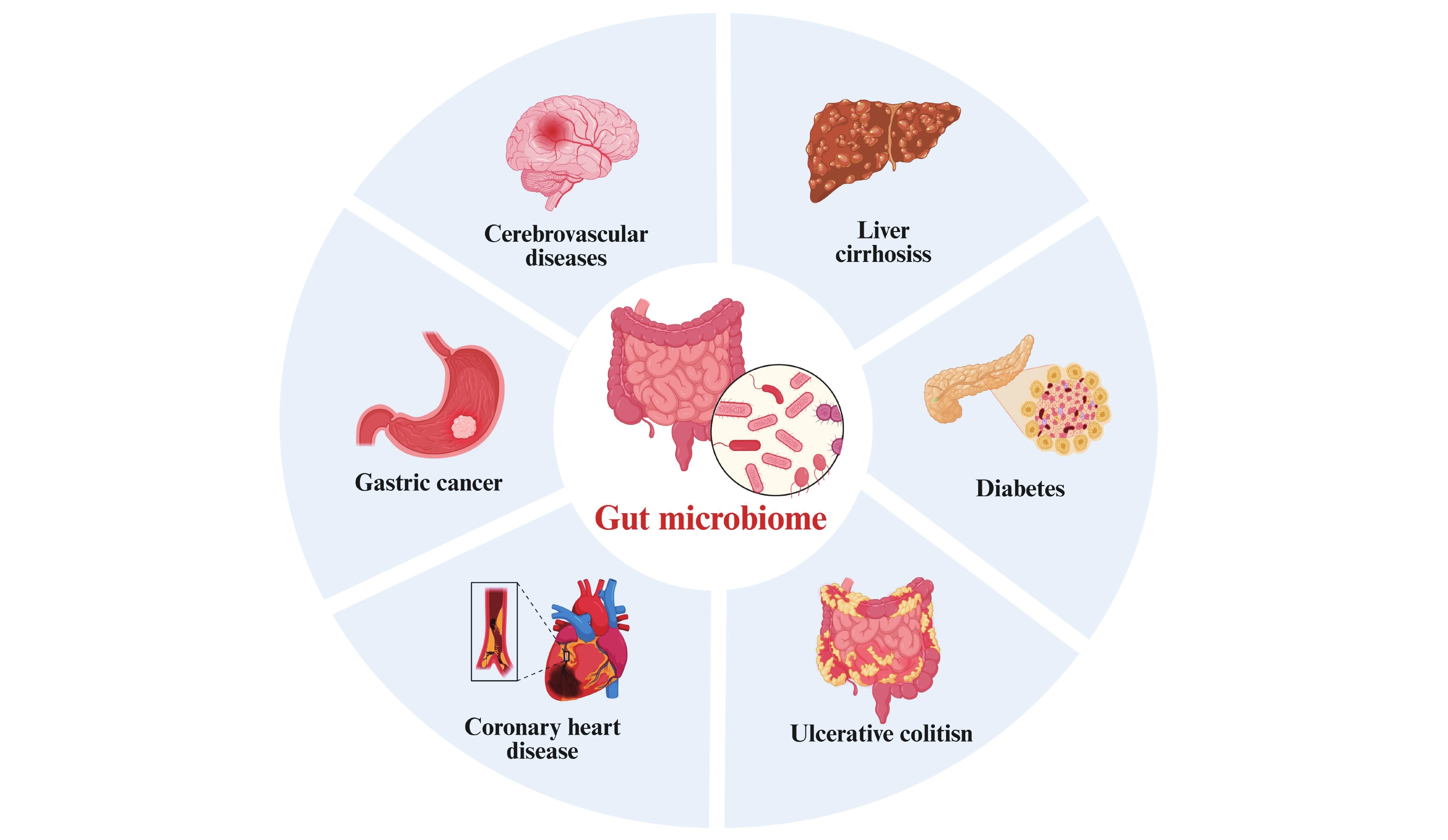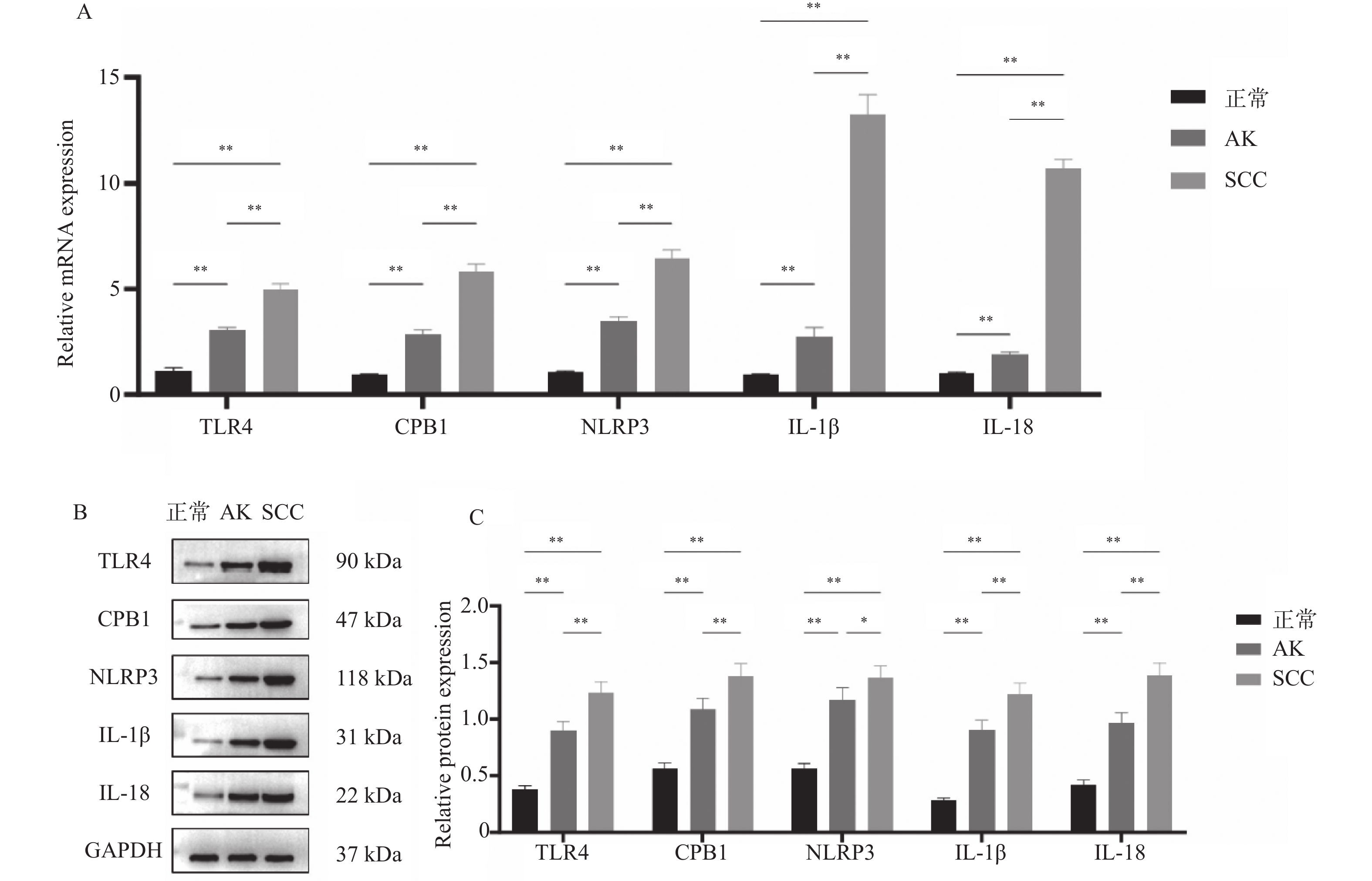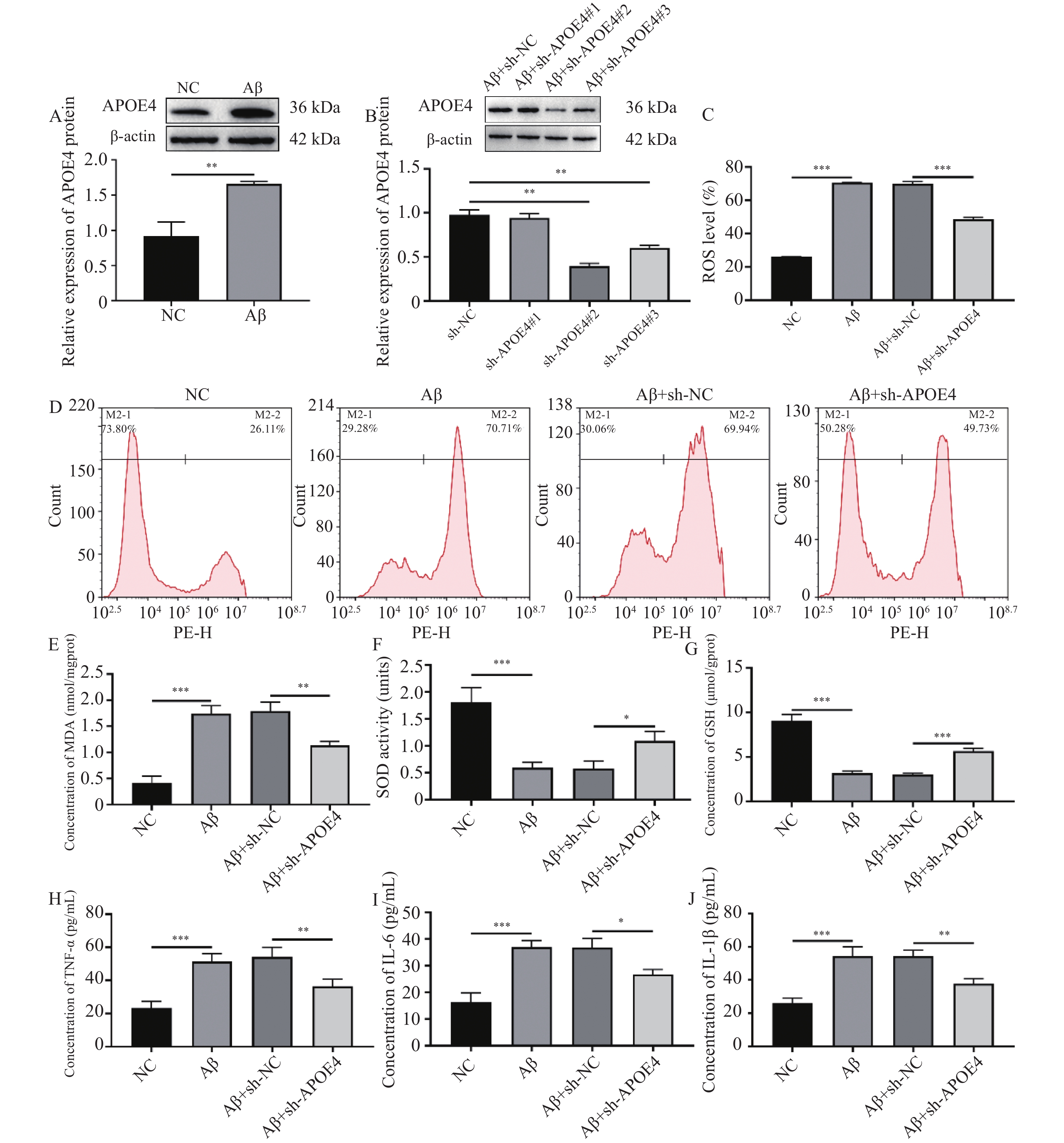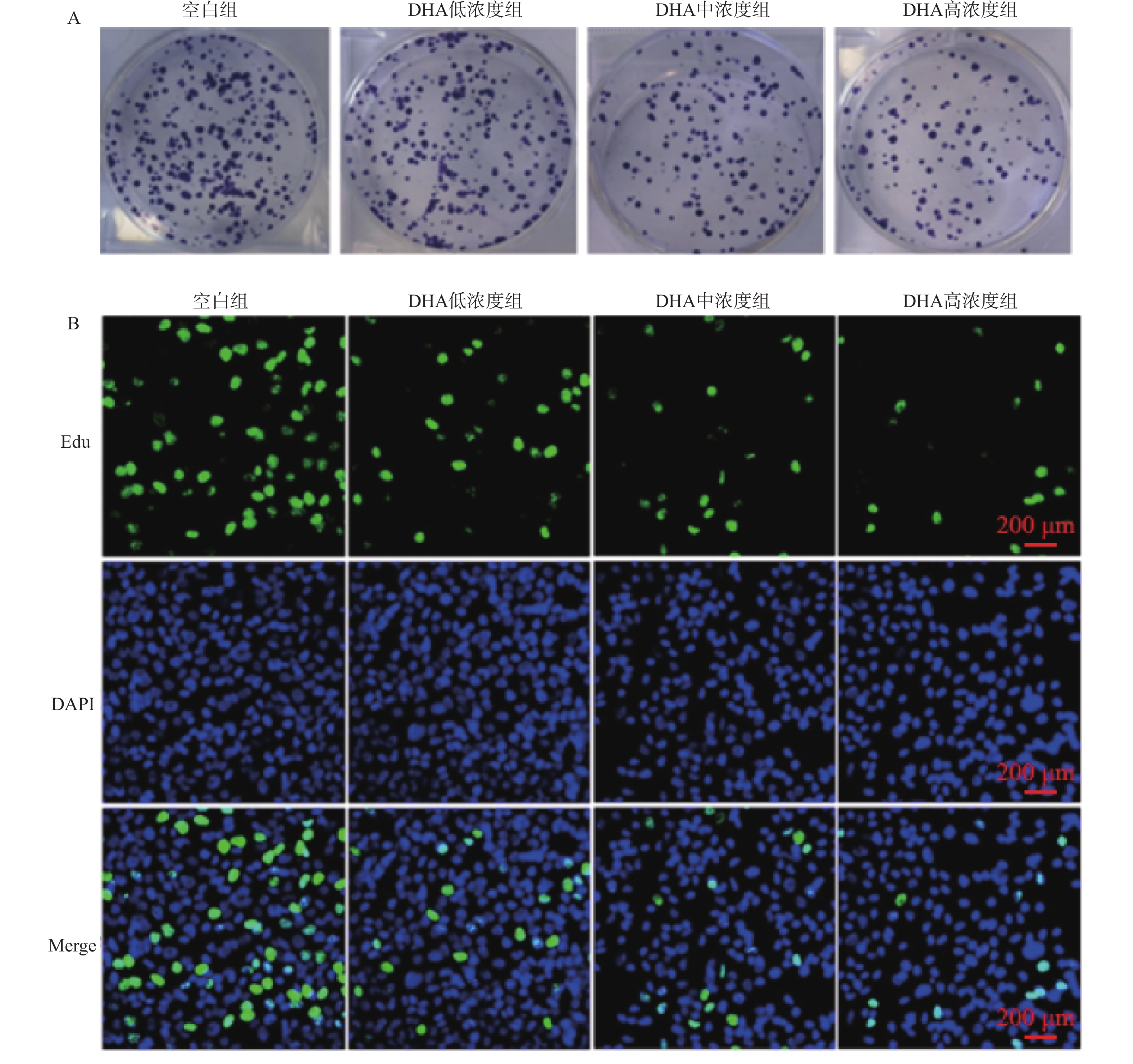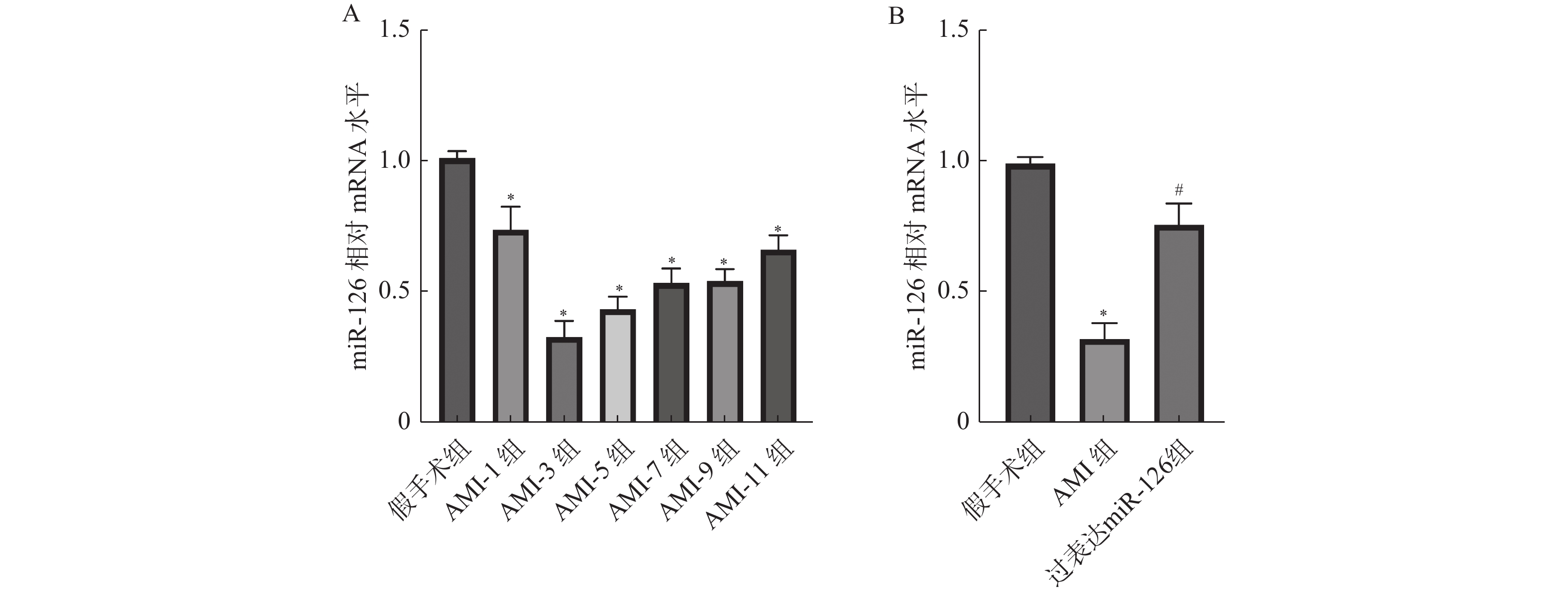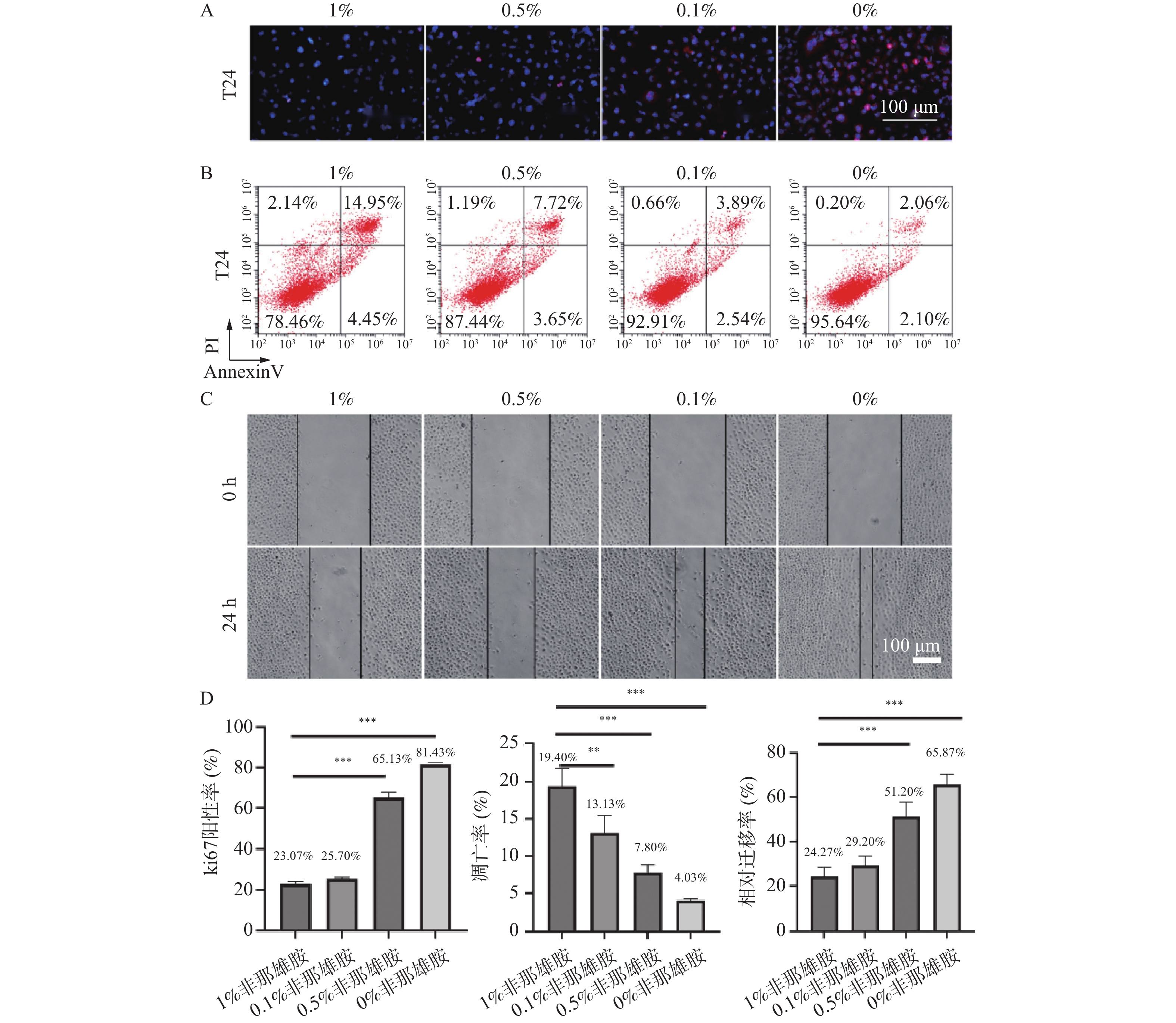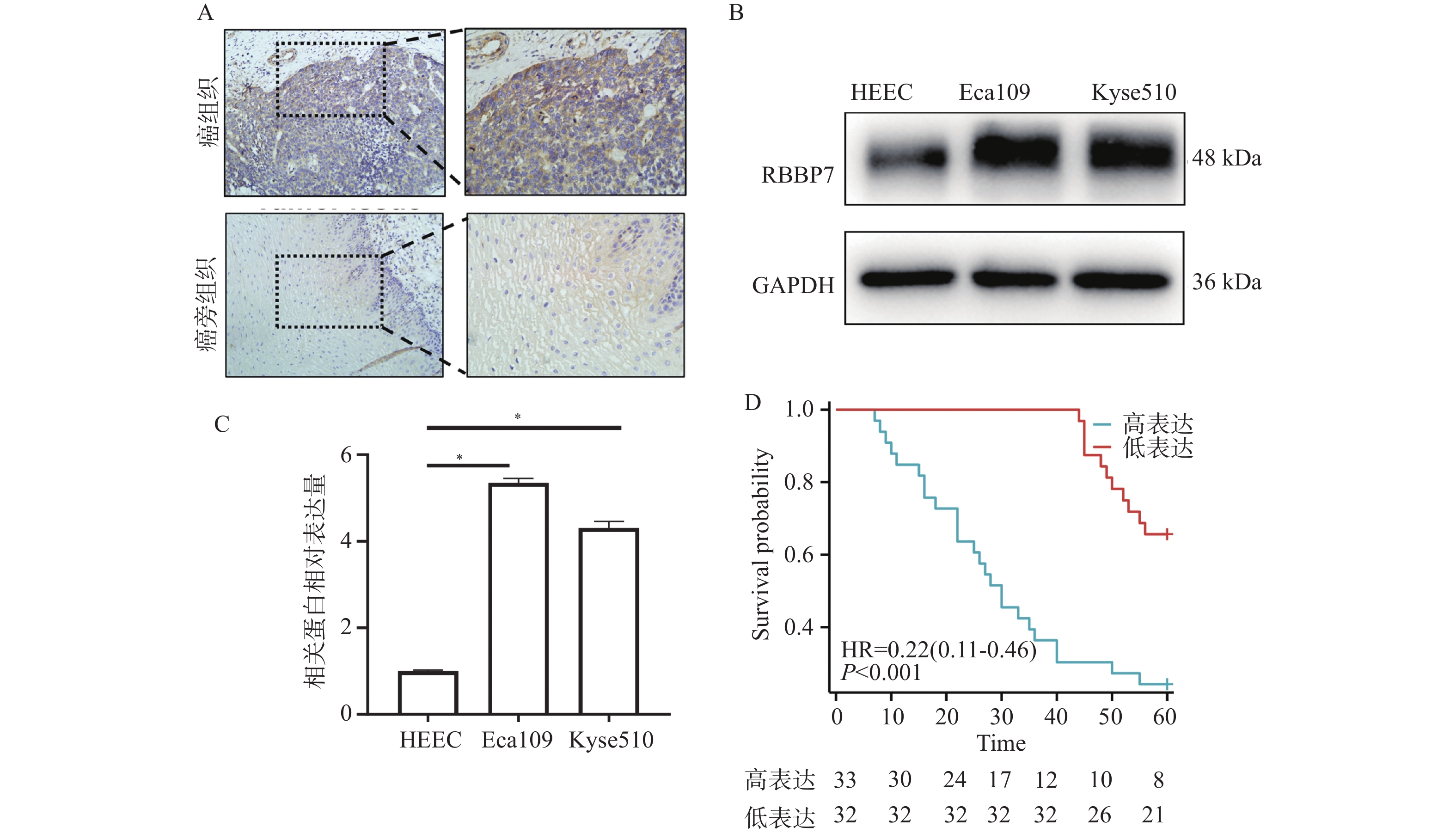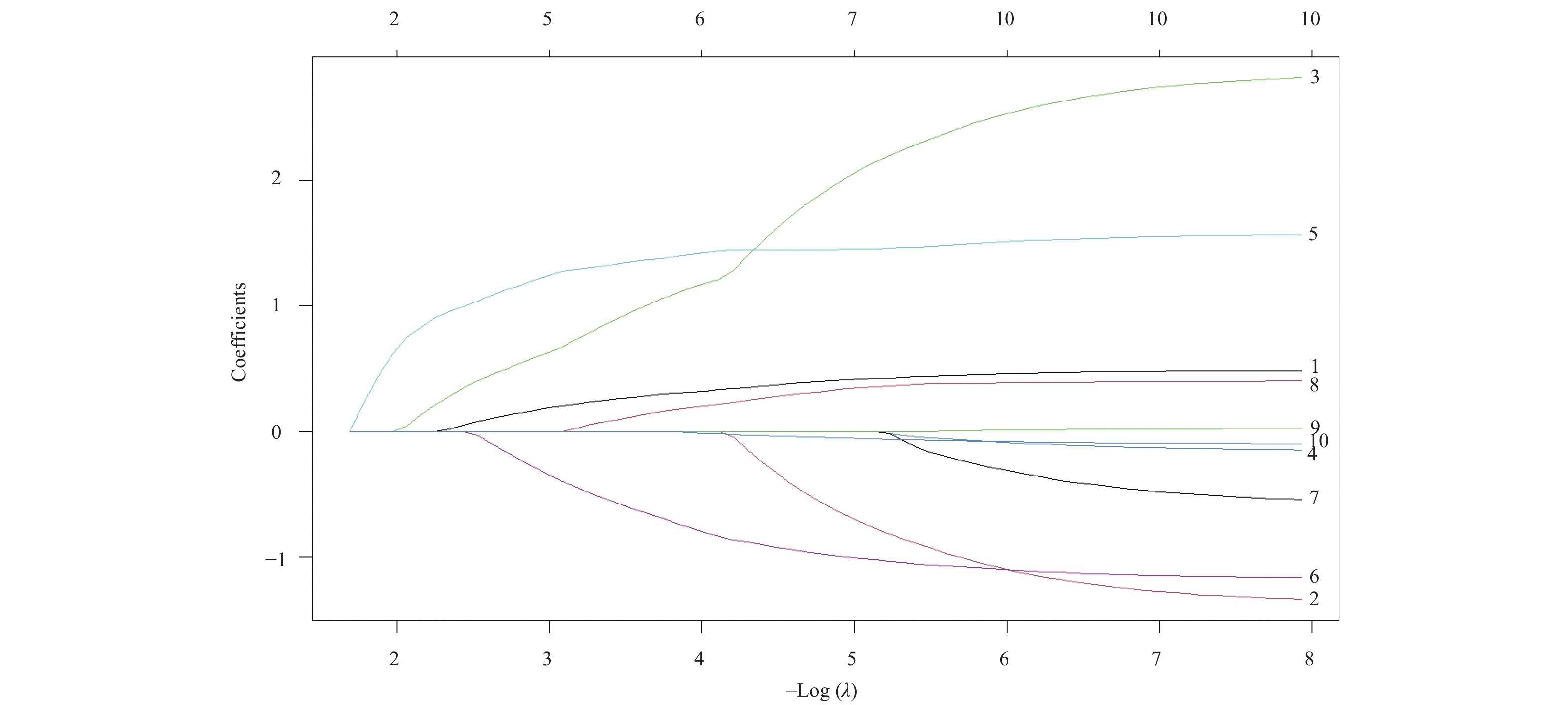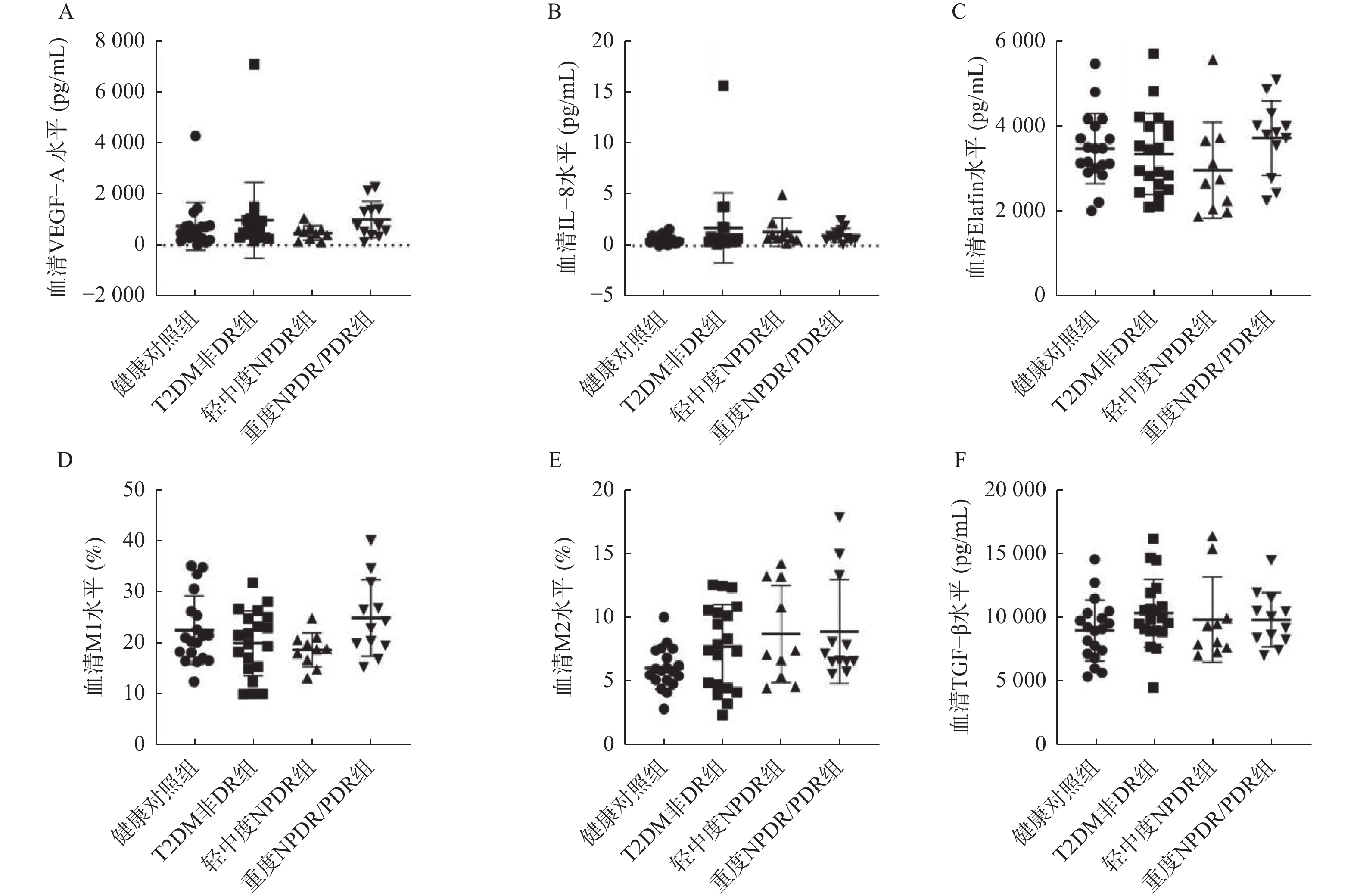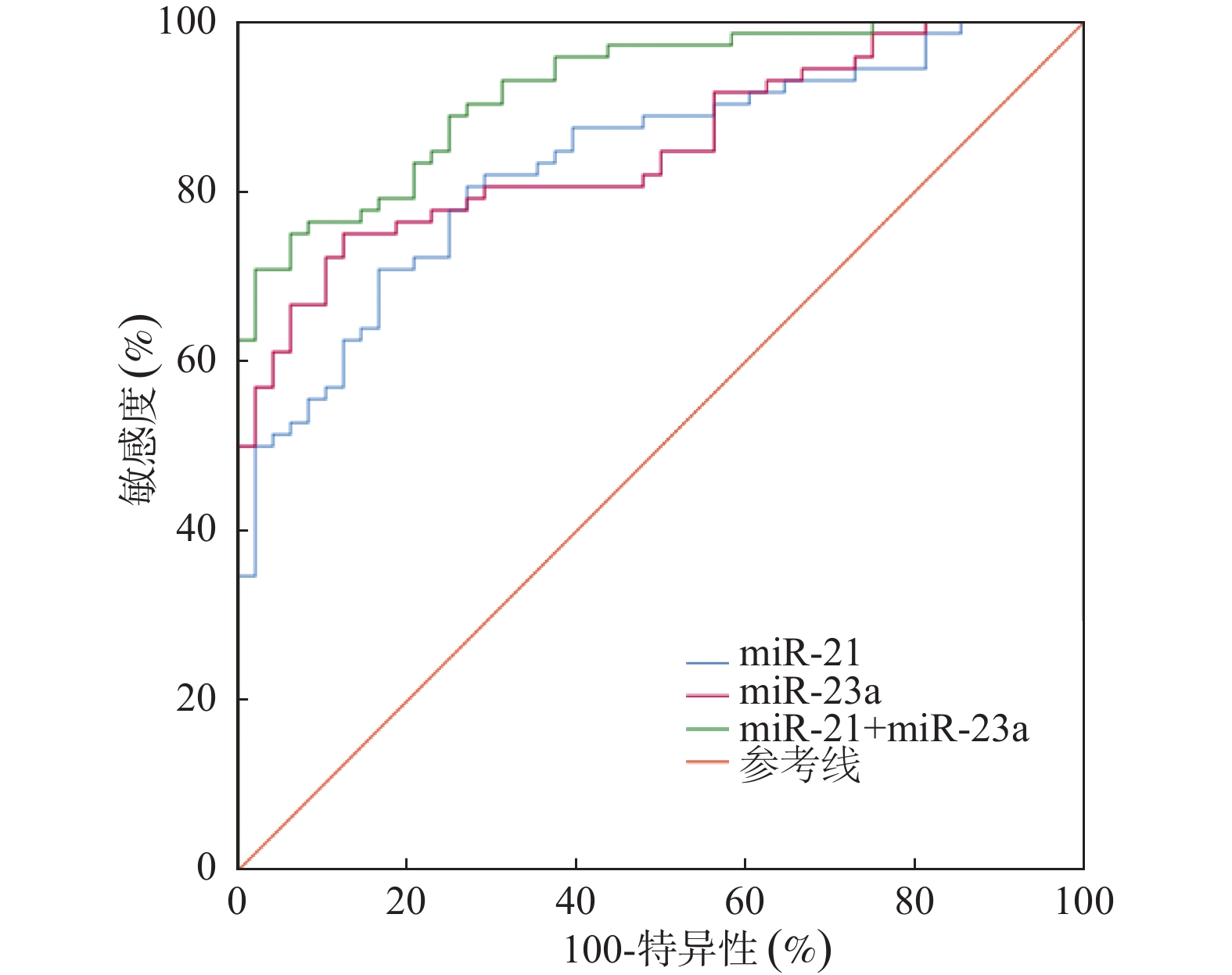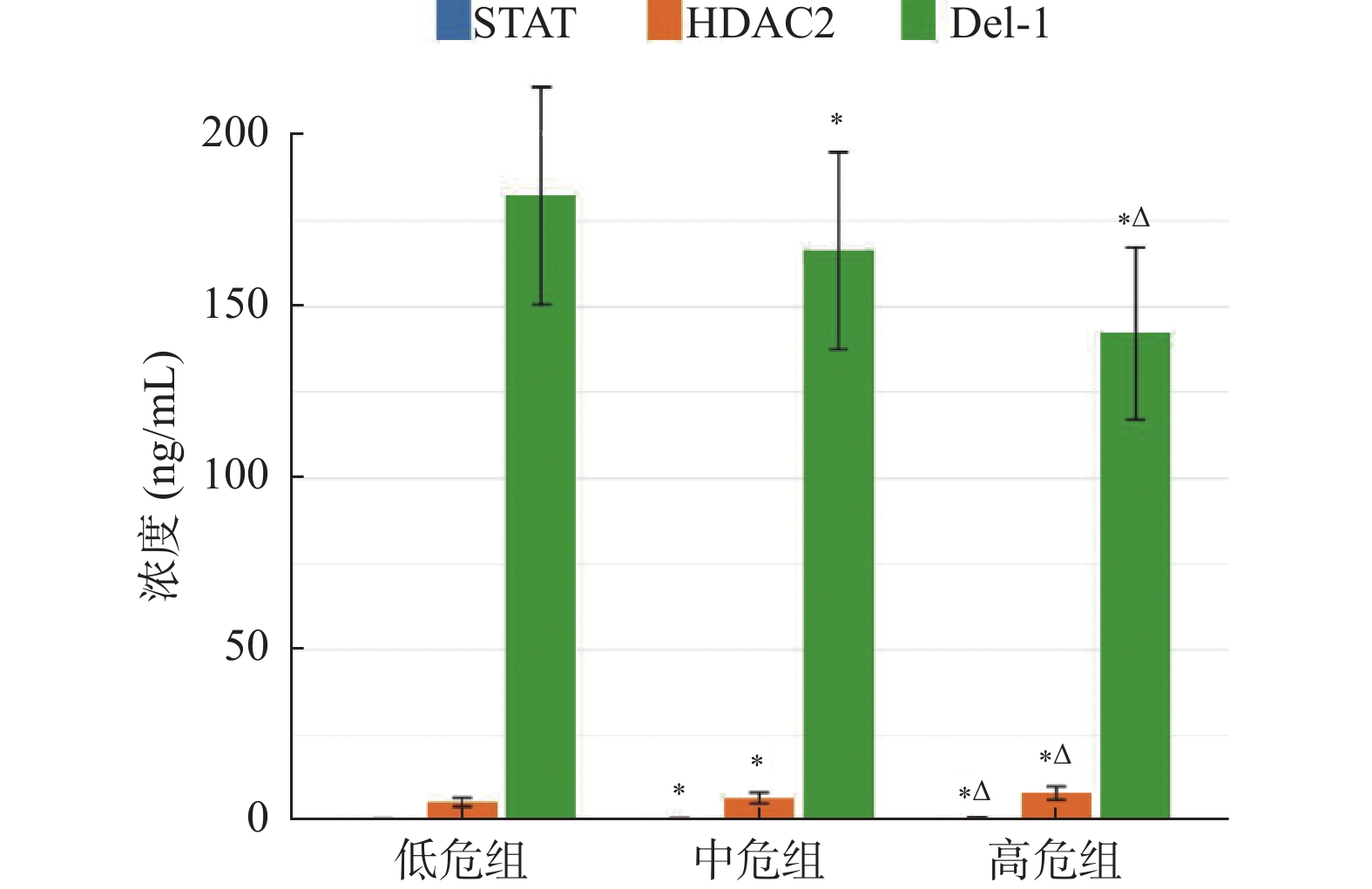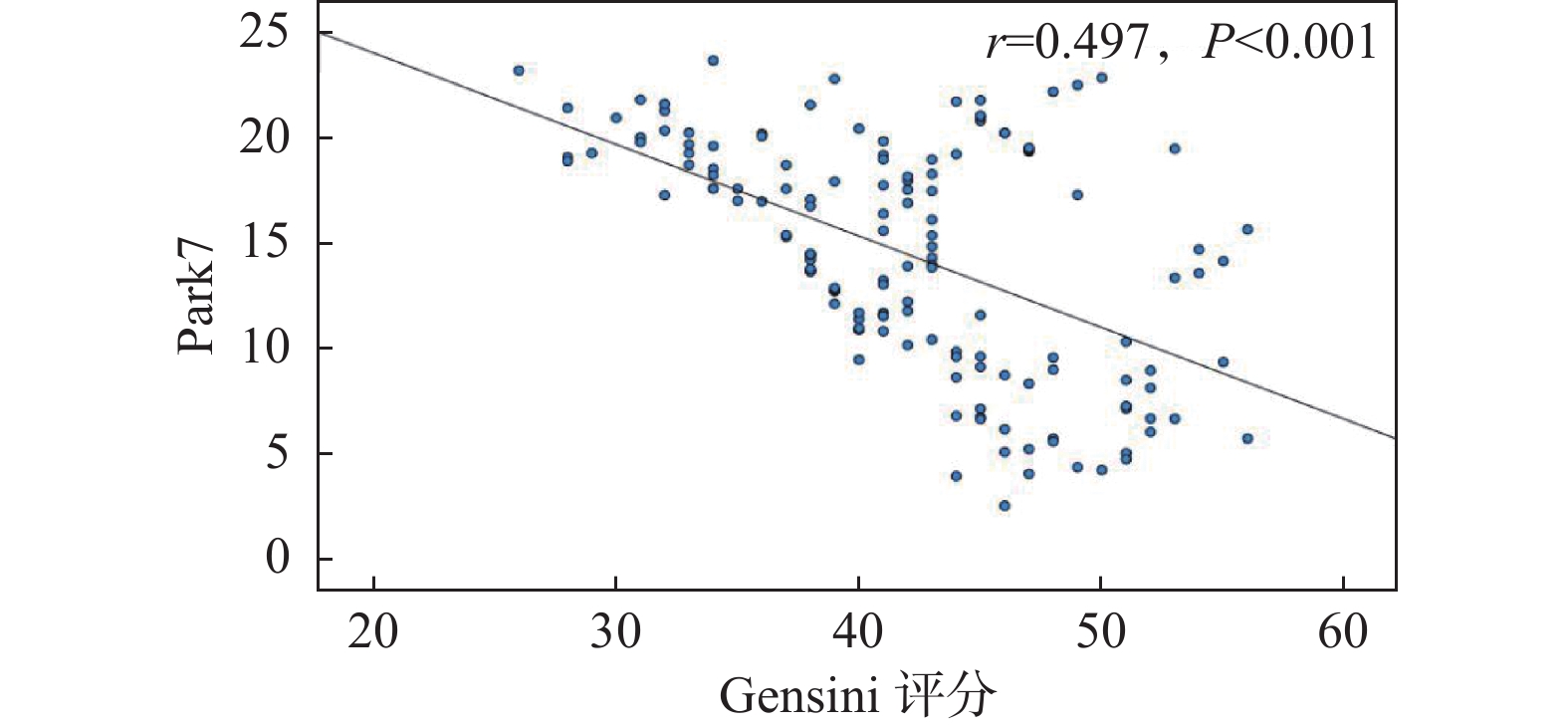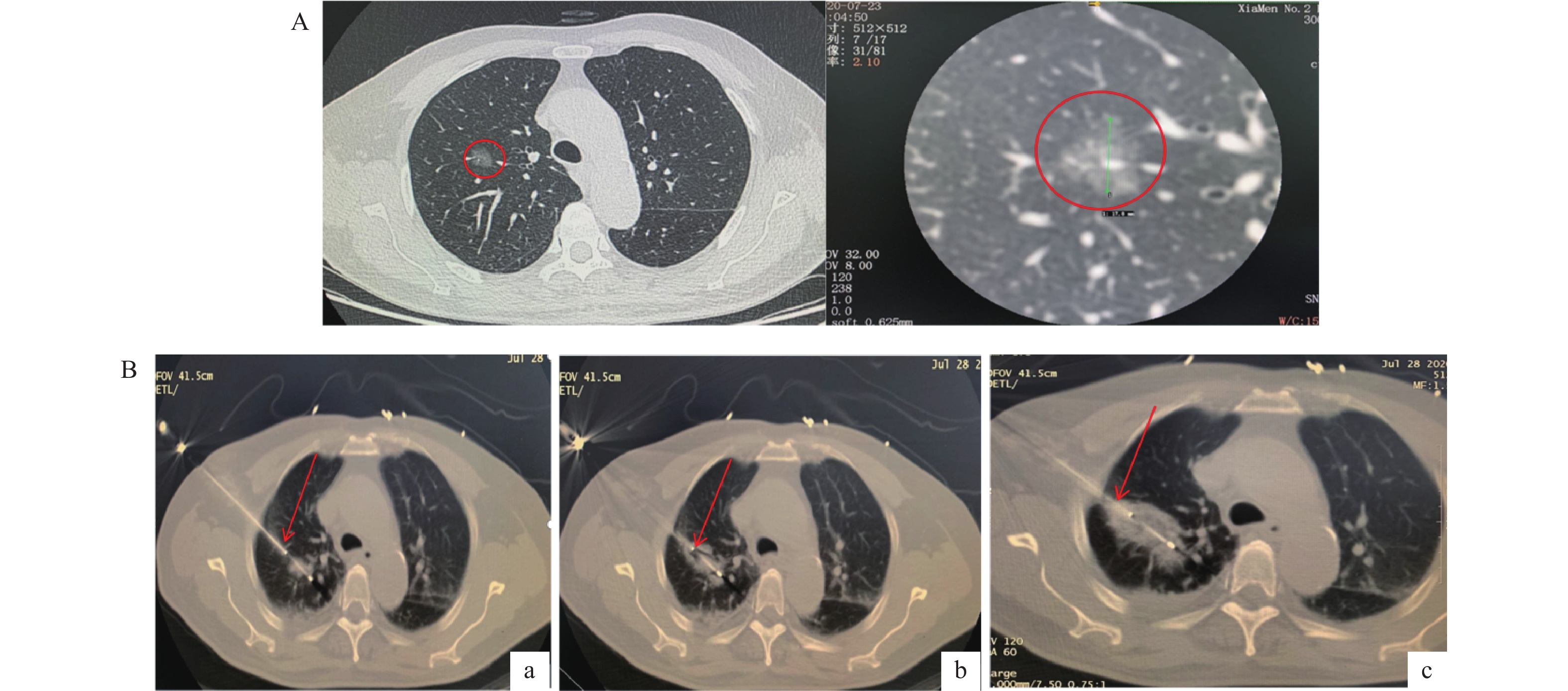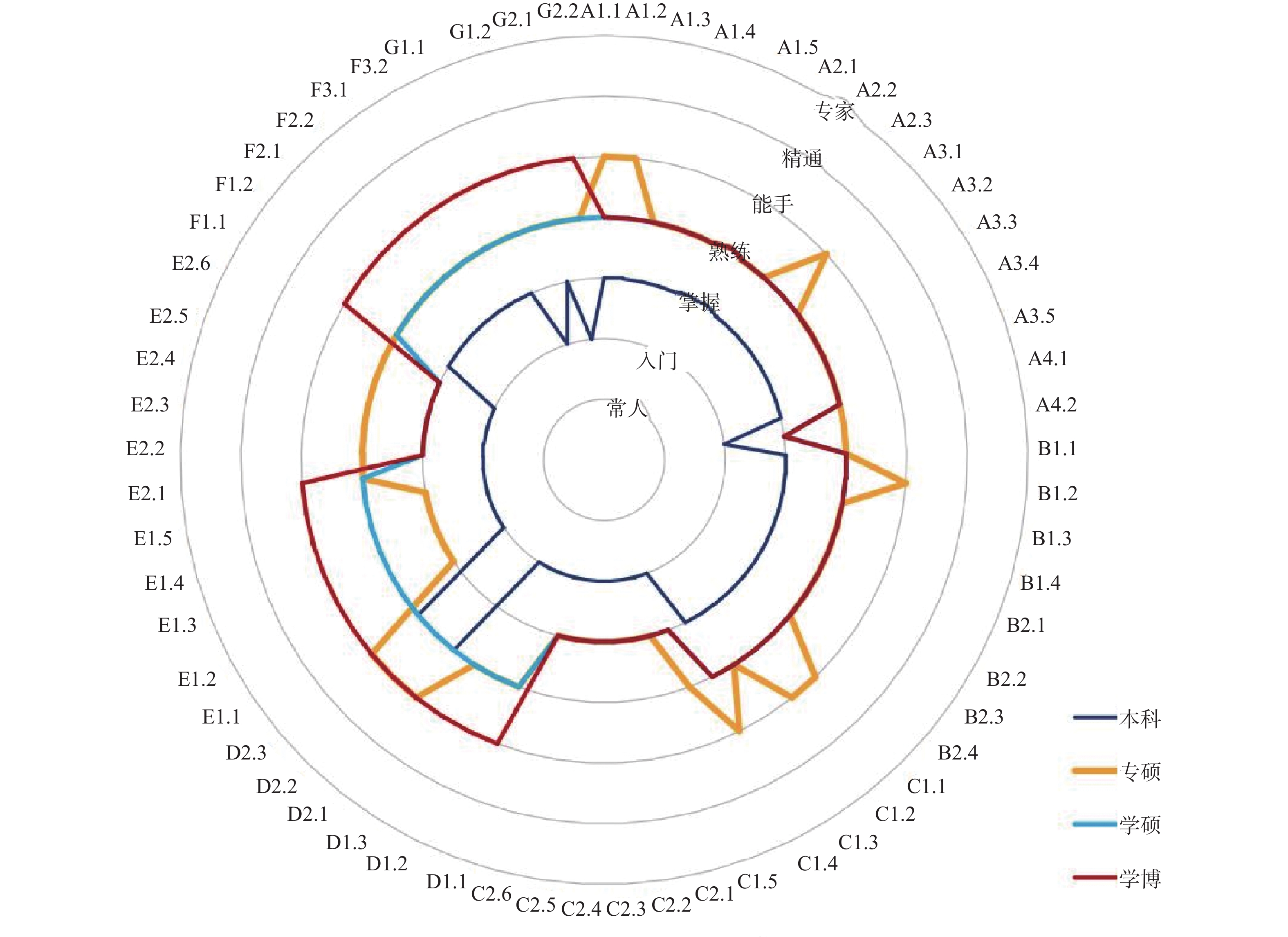Current Issue
2025, Volume 46, Issue 11
2025,
46(11):
1-10.
doi: 10.12259/j.issn.2095-610X.S20251101
Abstract:
The composition of the Gut Microbiome (GM) is regulated by numerous factors, including geography, ethnicity, diet, and genetics. This review systematically synthesizes studies on the GM across different geographic regions and ethnic minority groups in China. It focuses on elucidating the impact of geographical factors and ethnic backgrounds on GM composition and structure and provides an in-depth discussion on the association between ethnicity-specific microbial taxa, their metabolic functions, and susceptibility to diseases. By systematically comparing microbial compositional differences in microbiota-related diseases among different populations, this review aims to uncover the underlying patterns. The findings are expected to provide a theoretical foundation for ethnicity-specific GM research, the elucidation of disease mechanisms, and the development of targeted prevention and control strategies.
The composition of the Gut Microbiome (GM) is regulated by numerous factors, including geography, ethnicity, diet, and genetics. This review systematically synthesizes studies on the GM across different geographic regions and ethnic minority groups in China. It focuses on elucidating the impact of geographical factors and ethnic backgrounds on GM composition and structure and provides an in-depth discussion on the association between ethnicity-specific microbial taxa, their metabolic functions, and susceptibility to diseases. By systematically comparing microbial compositional differences in microbiota-related diseases among different populations, this review aims to uncover the underlying patterns. The findings are expected to provide a theoretical foundation for ethnicity-specific GM research, the elucidation of disease mechanisms, and the development of targeted prevention and control strategies.
2025,
46(11):
11-17.
doi: 10.12259/j.issn.2095-610X.S20251102
Abstract:
Objective To investigate whether the pyroptosis-related Toll-like receptor 4 (TLR4) signaling pathway influences the malignant transformation of actinic keratosis (AK) into cutaneous squamous cell carcinoma (SCC). Methods A total of 6 lesion tissue samples each from patients with AK and SCC, as well as 5 normal skin tissue samples from healthy subjects as controls, were collected from the First Affiliated Hospital of Kunming Medical University between August 2020 and August 2021. Quantitative PCR (qPCR) and Western blot analysis were performed to determine the mRNA and protein expression levels of TLR4 pathway–related factors, including TLR4, CPB1, NLRP3, IL-1β, and IL-18. TLR4/TUNEL double immunofluorescence staining was used to evaluate TLR4 expression and the level of cellular pyroptosis in tissue samples. In addition, Western blotting was performed to analyze the expression differences of pyroptosis-related core proteins (pro-caspase-1, cleaved caspase-1/p20, GSDMD, and cleaved N-terminal GSDMD) and TLR4 among the normal keratinocyte cell line HaCaT and SCC cell lines A431 and SCL-1. Results Quantitative PCR and Western blot results showed that the mRNA and protein expression levels of TLR4, CPB1, NLRP3, IL-1β, and IL-18 were significantly higher in SCC tissues than in AK and normal skin tissues (P < 0.05). TLR4/TUNEL double immunofluorescence results revealed a progressive increasing trend in TLR4 expression and pyroptosis levels from normal skin to AK and further to SCC (P < 0.05). Furthermore, in SCL-1 cells, the expression levels of pro-caspase-1, cleaved caspase-1/p20, cleaved N-terminal GSDMD, and TLR4 were significantly upregulated (P < 0.05), whereas in A431 cells, only TLR4 expression was increased (P < 0.05), and the levels of other pyroptosis-related proteins were downregulated compared to HaCaT cells (P < 0.05). Conclusion The expression of the TLR4 signaling pathway gradually increased from AK to SCC, and its activation status varied among different cutaneous squamous cell carcinoma cell lines.
2025,
46(11):
18-25.
doi: 10.12259/j.issn.2095-610X.S20251103
Abstract:
Objective To investigate the effect of APOE4 in regulating LRP1 and on β-amyloid protein Aβ25-35-induced oxidative stress and inflammatory response in astrocytes. Methods Human astrocytes were transfected with sh-NC, sh-APOE4, pcDNA-NC, and pcDNA-LRP1, and then induced with 10 μM Aβ25-35 for 24 h to establish an AD cell model. The roles of APOE4 and LRP1 in Aβ25-35-induced oxidative stress and inflammatory response were assessed using Western blot, flow cytometry, the detection kits of MDA, SOD, and GSH, as well as enzyme-linked immunosorbent assay (ELISA) kits for TNF-α, IL-6, and IL-1β. The protein-protein interaction between APOE4 and LRP1 was detected through co-immunoprecipitation and western blot experiments. Results Aβ25-35 induction upregulated APOE4 expression (P < 0.01), promoted the levels of ROS ( P < 0.001), MDA ( P < 0.001), and inflammatory cytokines TNF-α, IL-6, and IL-1β ( P < 0.001) in astrocytes, while inhibited the expression of SOD, GSH, and LRP1 ( P < 0.001). Knockdown of APOE4 or overexpression of LRP1 suppressed the Aβ 25-35-induced increase in ROS, oxidative stress markers, and inflammatory cytokines in cells (P < 0.05). APOE4 negatively regulated LRP1 protein expression through protein-protein interactions. The levels of ROS, MDA, and inflammatory cytokines were higher ( P < 0.05), and the concentrations of SOD and GSH were lower ( P < 0.001), in cells with simultaneous knockdown of APOE4 and LRP1 compared to those with APOE4 knockdown alone. Conclusion Knockdown of APOE4 attenuates Aβ25-35-induced oxidative stress and inflammatory response in astrocytes by upregulating LRP1.
2025,
46(11):
26-34.
doi: 10.12259/j.issn.2095-610X.S20251104
Abstract:
Objective To investigate the effects of dihydroartemisinin (DHA) on the proliferation and metastasis of prostate cancer cells via the speckle-type POZ protein (SPOP)/heterogeneous nuclear ribonucleoprotein K (HnRNPK) pathway. Methods The prostate cancer cell line DU145 was cultured in vitro and treated with different concentrations of DHA. Cells were divided into groups based on DHA concentration: blank group (0 μmol/L), low-concentration group (10 μmol/L), medium-concentration group (50 μmol/L), and high-concentration group (100 μmol/L). Colony formation assay, scratch assay, and Transwell assay were performed to observe changes in proliferation, migration, and invasion of DU145 cells under different DHA treatments. Western blotting was used to detect the expression levels of SPOP, HnRNPK, Vimentin, Neural-cadherin (N-cadherin), Epithelial-cadherin (E-cadherin), and Zonula occludens-1 (ZO-1). SPOP expression was knocked down in DU145 cells (SPOP-shNC-DU145, SPOP-sh-DU145), which were then subjected to the aforementioned low, medium, and high DHA concentration interventions for rescue experiments. A xenograft mouse model was established by injecting SPOP-knockdown cells into mice, followed by oral administration of low (2.5 mg/kg), medium (5 mg/kg), and high (10 mg/kg) concentrations of DHA. Results Compared with the blank group, the proliferation, migration, and invasion of DU145 cells in the low-, medium-, and high-concentration groups were significantly inhibited (P < 0.05), Intracellular expression levels of HnRNPK, Vimentin, and N-cadherin were decreased (P < 0.05), while the expression levels of SPOP, E-cadherin, and ZO-1 were increased (P < 0.05). Compared with SPOP-shNC DU145 cells, the inhibitory effects of DHA on SPOP-sh DU145 cells were attenuated, with increased expression levels of HnRNPK, Vimentin, and N-cadherin (P < 0.05), and decreased expression levels of E-cadherin and ZO-1 (P < 0.05). Conclusion DHA may target and induce increased SPOP expression, thereby inhibiting the proliferation and metastasis of DU145 cells.
2025,
46(11):
35-42.
doi: 10.12259/j.issn.2095-610X.S20251105
Abstract:
Objective To investigate the mechanisms by which miR-23 regulates the PI3K/AKT/mTOR signaling pathway to influence myocardial remodeling, fibrosis, and angiogenesis in hypertensive heart failure (HF) rats. Methods Forty rats were randomly divided into four groups (n = 10 per group): a control group, a model group, an antagomir-NC group, and an antagomir-23 group. The HF model was established using a high-salt diet, and intervention was performed via tail vein injection of antagomir-23. Cardiac function parameters, the degree of myocardial fibrosis, cell apoptosis levels, and the expression of angiogenesis-related proteins including CD31, VEGF, and bFGF were measured in each group. Concurrently, the activity of the PI3K/AKT/mTOR signaling pathway was assessed. A dual-luciferase reporter assay was conducted to confirm that miR-23 targets PI3K. Results Inhibition of miR-23 significantly improved cardiac function in hypertensive HF rats, reduced myocardial fibrosis and apoptosis, and enhanced the expression of CD31, VEGF, bFGF, and activated the PI3K/AKT/mTOR signaling pathway in hypertensive HF rats (all P < 0.05). The dual-luciferase assay confirmed that miR-23 negatively regulates PI3K expression. Conclusion Inhibition of miR-23 can activate the PI3K/AKT/mTOR signaling pathway, promote angiogenesis, reduce myocardial damage, thereby delaying the progression of hypertensive heart failure.
2025,
46(11):
43-49.
doi: 10.12259/j.issn.2095-610X.S20251106
Abstract:
Objective To investigate the effects of miR-126 on myocardial remodeling and macrophage polarization after acute myocardial infarction (AMI). Methods (1) Twenty-one rats were divided into a sham operation group and an AMI group. The AMI group was further divided into postoperative days 1, 3, 5, 7, 9, and 11 days (AMI-1, AMI-3, AMI-5, AMI-7, AMI-9, AMI-11), with 3 rats in each group, and postoperative day 3 was selected for subsequent study. (2) Thirty rats were randomly divided into three groups: sham operation group, AMI group and miR-126 overexpression group, with 10 rats in each group. RT-qPCR was used to detect the expression levels of miR-126 mRNA. 2, 3, 5-Triphenyltetrazole chloride (TTC) staining was used to detect the infarct size. Myocardial fibrosis was detected by Masson staining. The cross-sectional area of the myocardium was determined by H&E staining. Immunofluorescence staining was used to detect the protein levels of CD86 and CD206 in myocardial tissue. Western blotting was used to detect the protein levels of CD86 and CD206 in myocardial tissue. The levels of tumor necrosis factor-α (TNF-α), interleukin-1β (IL-1β) and IL-6 in serum were detected by ELISA kit. Results Compared with the sham operation group, the expression level of miR-126 mRNA in myocardial tissue of rats in the AMI group was significantly decreased on postoperative day 1 (P < 0.05), reached the lowest level on postoperative day 3. And then although it rose to a certain extent, it remained lower than that of the sham operation group on postoperative day 11 (P < 0.05), and postoperative day 3 was selected for further study. Compared with the sham operation group, the expression of miR-126 mRNA in myocardial tissue of the AMI group was decreased (P < 0.05), and the myocardial fibrosis, infarct size and myocardial cross-sectional area were increased (P < 0.05). The expression of CD86 protein in myocardial tissue was increased and the expression of CD206 protein was decreased (P < 0.05). The serum levels of TNF-α, IL-6 and IL-1β were increased (P < 0.05). Compared with the AMI group, the rats in the miR-126 overexpression group had a significant increase in the mRNA expression of miR-126 in myocardial tissue (P < 0.05), a significant reduction in myocardial fibrosis, infarct size, and myocardial cross-sectional area (P < 0.05), a significant reduction in the expression of CD86 protein in myocardial tissue, and a significant increase in the expression of CD206 protein (P < 0.05). The serum levels of TNF-α, IL-6 and IL-1β were significantly decreased (P < 0.05). Conclusion Over-expression of miR-126 can improve myocardial remodeling and promote M2 macrophage polarization in AMI rats.
2025,
46(11):
50-57.
doi: 10.12259/j.issn.2095-610X.S20251107
Abstract:
Objective To explore the effects and mechanism of finasteride on epithelial mesenchymal transition in bladder urothelial carcinoma. Methods T24 human bladder cancer cells were treated with different concentrations of finasteride (0.1%, 0.5%, and 1%) for 24 hours, with untreated T24 cells as the control group. Some cells were subjected to hypoxic conditions (1% O2) to mimic a low-oxygen microenvironment. Cell proliferation was assessed by immunofluorescence staining for Ki-67. Apoptosis rates were evaluated using Annexin V-FITC/PI double staining followed by flow cytometry, and cell migration was analyzed via scratch wound assays. Western blot was used to detect the expression of EMT-related proteins such as HIF-1α, E-cadherin, N-cadherin, and Vimentin. To further validate the role of the HIF-1α pathway in finasteride’ s anti-tumor effects, a HIF-1α overexpression lentiviral vector (MOP-1) was constructed and transfected into T24 cells. For animal experiment, T24 tumor-bearing nude mice were randomly divided into four groups: control, MOP-1, 1% finasteride, and 1% finasteride + MOP-1 (n = 4 per group). After 4 weeks of continuous oral administration, tumor growth, metastasis, and perihepatic lymph node changes were recorded, and histological analysis was performed using H&E staining. Results Finasteride affects the proliferation, apoptosis, and epithelial-to-mesenchymal transition of T24 cells in a concentration-dependent manner. Compared to the control group, finasteride-treated T24 cells showed a reduced number of cells in the growth phase, decreased migration, increased expression of epithelial markers, and decreased expression of mesenchymal markers (P < 0.05). In T24 cells exposed to hypoxic conditions, the expression of HIF-1α pathway markers was significantly increased (P < 0.05), while 1% finasteride treatment inhibited the HIF-1α pathway (P < 0.05). The HIF-1α pathway expression level in the 1% finasteride and HIF-1α overexpression plasmid group was lower than that in the control group (P < 0.05). Additionally, the tumor mass-to-body weight ratios were lower, with the number of bladder cancer metastases to the liver decreased (P < 0.05). Conclusion Finasteride can effectively block the growth of bladder cancer and the transition of epithelial cells into mesenchymal cells by inhibiting HIF-1α/Snail expression.
2025,
46(11):
58-64.
doi: 10.12259/j.issn.2095-610X.S20251108
Abstract:
Objective To explore the mechanism by which T cell immunoglobulin and mucin domain-3 (TIM-3) promotes the Hippo signaling pathway in the pathogenesis of preeclampsia. Methods HTR-8/Svneo cells were divided into a control group (Con), a recombinant human Tim-3 protein (Tim-3 Fc) group, a YAP1 inhibitor CA3 group and a Tim-3 Fc+CA3 group. Cell proliferation was analyzed by 5- ethynyl-2 ′-deoxyuridine (EdU). Cell invasion and migration were evaluated by Transwell assay, and cell apoptosis was analyzed by terminal deoxynucleotidyl transferase dUTP nick end labeling (TUNEL) assay. Protein expression levels of TIM-3 and Hippo pathway components in HTR-8/SVneo cells were detected by Western Blot. Results Compared to the Con group, protein expression levels of TIM-3, YAP1 and TAZ were up-regulated in HTR-8/SVneo trophoblast cells of the TIM-3 Fc group(P < 0.05). Compared to the TIM-3 Fc group, protein expression levels of YAP1 and TAZ were down-regulated in trophoblast cells of the TIM-3 Fc+CA3 group (P < 0.05). Compared to the Con group, the rate of EdU positive cells in HTR-8/SVneo trophoblast cells in TIM-3 Fc group was increased significantly (P < 0.05). Compared to the TIM-3 Fc group, the rate of EdU positive cells and the number of apoptotic cells in HTR-8/SVneo trophoblast cells of the TIM-3 Fc+CA3 group were decreased significantly (P < 0.05). Compared to the Con group, the number of HTR-8/SVneo trophoblast cells in TIM-3 Fc group was increased significantly (P < 0.05). Compared to the TIM-3 Fc group, the number of HTR-8/SVneo trophoblast cells in TIM-3 Fc+CA3 group was decreased significantly (P < 0.05). Conclusions Tim-3 activates the Hippo pathway by interacting with YAP1 in trophoblast cells, thus promoting cell proliferation, invasion and migration.
2025,
46(11):
65-73.
doi: 10.12259/j.issn.2095-610X.S20251109
Abstract:
Objective To investigate the expression of retinoblastoma-binding protein 7 (RBBP7) in esophageal cancer and its molecular mechanism affecting its progression. Methods The tumor specimens and corresponding adjacent normal tissue specimens of 65 patients with esophageal cancer undergoing radical resection in the General Hospital of Wanbei Coal and Electricity Group Affiliated to Bengbu Medical University from January 2018 to December 2019 were collected. The expression of RBBP7 in esophageal cancer tissues was detected by immunohistochemistry, and the clinical correlation was analyzed. Eca109 and Kyse510 esophageal cancer cell lines were selected to detect the expression of RBBP7 in esophageal cancer cells by Western blot. The experiments were divided into Vector group, RBBP7 group, NC group and si-RBBP7 group by transfection technology. CCK-8 assay, colony formation assay, Transwell assay, wound healing assay and Western blot were used to detect the effect of RBBP7 on the proliferation, invasion, migration and radioresistance of esophageal cancer cells and its mechanism. Results The results of immunohistochemistry in clinical samples and Western blot in esophageal cancer cell lines showed that RBBP7 was highly expressed in esophageal cancer tissues compared with normal adjacent tissues (P < 0.05), and esophageal cancer patients with high expression of RBBP7 had a poor prognosis (P < 0.05). In the mechanism study, we found that overexpression of RBBP7 promoted the proliferation of esophageal cancer cells by CCK-8 and colony formation assay in vitro (P < 0.05). Overexpression of RBBP7 promoted the invasion, migration, and radioresistance of esophageal cancer cells (P < 0.05), and vice versa inhibited the proliferation, invasion, migration, and radioresistance of esophageal cancer cells (P < 0.05). The results of Western blot showed that compared with the Vector control group, overexpression of RBBP7 may regulate the malignant progression and radioresistance of esophageal cancer by activating Hippo signaling pathway (P < 0.05). Conclusion RBBP7 promotes the development and radioresistance of esophageal cancer through Hippo signaling pathway
2025,
46(11):
74-80.
doi: 10.12259/j.issn.2095-610X.S20251110
Abstract:
Objective To study the carrier rate and mutation spectrum of thalassemia genes in the population in Dehong Prefecture, Yunnan Province, thereby providing a scientific basis for developing precise thalassemia prevention and control strategies in this region. Methods A total of 6946 samples were screened and diagnosed for α-thalassemia and β-thalassemia using genetic screening and diagnostic techniques. The carrier status of thalassemia genes in the population was statistically analyzed. Results Among the 6946 samples, 1880 tested positive for thalassemia genes, yielding a positive rate of 27.07% (1880/6946 ). This study detected 1174 α-thalassemia positive samples, with a positive rate of 16.90% (1174 /6946 ). Among the mutation types, -α3.7/αα was identified as the predominant genotype. There were 493 β-thalassemia positive samples, with a positive rate of 7.10% (493/6946 ). Among the mutation types, CD26 was the most predominant mutation type. The differences in carrier rates between α-thalassemia and β-thalassemia was statistically significant (P < 0.01). Additionally, 213 samples were positive for both α-thalassemia and β-thalassemia (compound carriers), with a positive rate of 3.07% (213/6946 ). There were also 207 intermediate thalassemia positive samples, with a positive rate of 2.98% (207/6946 ). Among these, the -α3.7/--SEA genotype was the most predominant . Conclusion Dehong region is a high-prevalence area for thalassemia carriers, with a relatively high positive rate for thalassemia. The most common gene mutation type was -α3.7/αα and CD26.
2025,
46(11):
81-89.
doi: 10.12259/j.issn.2095-610X.S20251111
Abstract:
Objectives To identify key clinical factors influencing recurrence in osteosarcoma patients, to construct and validate a Nomogram-based recurrence risk prediction model, thereby providing a quantitative tool for clinical decision-making and recurrence prevention/control. Methods Clinical data of 469 osteosarcoma patients admitted to Yunnan Cancer Hospital between 2013~2022 were retrospectively collected. Statistical analysis was performed using R software (version 4.3.2). Potential influencing factors were initially screened via univariate analysis and LASSO regression analysis. Independent predictors of osteosarcoma recurrence were then identified using multivariate logistic regression analysis. Based on the identified independent factors, a Nomogram prediction model for recurrence risk was constructed. The area under the receiver operating characteristic curve (AUC) was used to evaluate the model's discriminative ability. Results Among the entire cohort, 68 patients experienced recurrence, yielding a recurrence rate of 14.50%. Multivariate analysis identified the following as independent predictors of recurrence: Primary Tumor Location: Tibial lesions (P = 0.009) were associated with a significantly lower recurrence risk compared to femoral lesions (OR = 0.297), while lesions in "Other Bones" (P = 0.008) carried a significantly higher risk (OR = 3.294). Biopsy Method: Needle biopsy(P = 0.033) was associated with a significantly lower recurrence risk compared to open biopsy (OR = 0.461). Lung Metastasis Status: Patients with lung metastasis (P < 0.001) had a significantly higher recurrence risk than those without (OR = 11.873). Lymphocyte Count: A higher lymphocyte count (P = 0.001) was a protective factor, associated with a lower recurrence risk (OR = 0.450). The constructed Nomogram prediction model demonstrated excellent performance: Validation results showed an AUC=0.842(95%CI: 0.806~0.875), indicating outstanding discriminative ability. Conclusions This study successfully constructed and validated a Nomogram prediction model for osteosarcoma recurrence risk integrating key clinical factors. The model demonstrates superior discriminative ability and can accurately and quantitatively assess the recurrence risk for individual patients. This tool thus provides critical reference for guiding clinical treatment decisions.
2025,
46(11):
90-99.
doi: 10.12259/j.issn.2095-610X.S20251112
Abstract:
Objective To analyze the correlation between serum levels of C-X-C motif chemokine 5 (CXCL5), Toll-like receptor 4 (TLR4), and matrix metalloproteinase-3 (MMP-3) with the degree of joint destruction and serum uric acid (SUA) levels in gouty arthritis patients with different clinical characteristics, and to evaluate their predictive value for severe GA. Methods A total of 212 GA patients (GA group) diagnosed at Xi'an People's Hospital between June 2023 and June 2025 were enrolled, along with 212 healthy individuals (control group). Predictive value was assessed using receiver operating characteristic (ROC) curve analysis, and correlation was assessed using Pearson method. Results Serum levels of CXCL5, TLR4, and MMP-3 were significantly higher in the GA group compared to the control group (P < 0.05). Statistically significant differences in serum levels of CXCL5, TLR4, and MMP-3 were observed among GA patients with different clinical stages, affected joints, presence of tophi, disease duration, and annual attack frequency (P < 0.05). The severe GA group had higher levels of CXCL5, TLR4, and MMP-3 compared to the mild GA group (P < 0.05). GA patients were at higher risk for severe disease when serum CXCL5, TLR4, and MMP-3 levels exceeded 612.56 pg/mL, 11.15 ng/mL, and 12.06 ng/mL, respectively. The combined prediction of severe GA by CXCL5, TLR4, and MMP-3 yielded an area under the curve (AUC) of 0.963. Compared to low-expression patients, those with high expression of CXCL5, TLR4, and MMP-3 had a 2.758-fold, 2.184-fold, and 2.227-fold increased risk of severe GA, respectively. CXCL5, TLR4, and MMP-3 were identified as influencing factors for the disease severity (P < 0.05). The high SUA group had significantly higher serum levels of CXCL5, TLR4, and MMP-3 compared to the low SUA group (P < 0.05). Conclusion GA patients exhibit high serum expression of CXCL5, TLR4, and MMP-3, which are significantly associated with clinical features, the degree of joint destruction, and SUA levels, demonstrating considerable clinical value.
2025,
46(11):
100-106.
doi: 10.12259/j.issn.2095-610X.S20251113
Abstract:
Objective To explore the relationship between the M1/M2 macrophages and severity of diabetic retinopathy (DR). Methods This retrospective study included 42 patients with or without DR who had type 2 diabetes mellitus (T2DM) and 19 healthy individuals undergoing cataract intraocular surgery without systemic or ocular diseases from Handan Central Hospital between April 2022 and November 2023. Patients with T2DM were divided into three groups: diabetes mellitus with non-dominant diabetic retinopathy (T2DM non-DR group, n = 20), mild and moderate non-proliferative diabetic retinopathy (NPDR)(n = 10) and severe NPDR/ proliferative diabetic retinopathy (PDR)(n = 12). Peripheral blood and aqueous humor were obtained at surgery initiation. The levels of VEGF-A, IL-8, Elafin and TGF-β in the samples were analyzed using kits, and the ratio of M1 macrophages to M2 macrophages was analyzed by flow cytometry. Results Among patients with T2DM, there were significant differences in the duration of diabetes, insulin and metformin use among the three groups (P < 0.05). Aqueous humor levels of VEGF-A, IL-8, Elafin, M1 ratio, M2 ratio and TGF-β of each group were significantly different (F = 17.40, 9.492, 4.792, 11.32, 5.768 and 20.38, all P < 0.01). The levels of VEGF-A, IL-8, Elafin, M1 ratio, VD86 and TGF-β in severe NPDR/PDR group were significantly higher than those in healthy control group and T2DM non-DR group (P < 0.05), and the levels of VEGF-A, IL-8 and Elafin in severe NPDR/PDR group were significantly higher than those in mild and moderate NPDR group (P < 0.05). The levels of M1 proportion and TGF-β in aqueous humor of the mild to moderate NPDR group were significantly higher than those in healthy control group and T2DM non-DR group (P < 0.05). The level of M1 in aqueous humor was positively correlated with the levels of M2, Elafin, TGF-β and VEGF-A (r = 0.260, 0.411, 0.726 and 0.304, all P < 0.05), and the level of M2 was positively correlated with the levels of Elafin and TGF-β (r = 0.865, 0.552, all P < 0.01). Conclusion The elevation of IL-8 and M1 macrophages in the aqueous humor may promote the occurrence of DR, while the increase of Elafin and M2 macrophages may be a compensatory regulation to chronic inflammation, which is involved in the regulation of local microvascular lesions and fibrosis.
2025,
46(11):
107-115.
doi: 10.12259/j.issn.2095-610X.S20251114
Abstract:
Objective To explore the factors associated with respiratory syncytial virus (RSV) infection in patients with acute exacerbation of chronic obstructive pulmonary disease (AECOPD) and its correlation with serum levels of heat shock protein 70 (HSP70), Krüppel-like factor 5 (KLF5), and macrophage inflammatory protein-2 (MIP-2). Methods A total of 195 AECOPD patients were prospectively enrolled and categorized into an RSV-infected group (n = 95) and an uninfected group (n = 100) based on RSV infection status. The infected group was further subdivided by disease severity into mild, moderate, and severe subgroups (31 cases, 35 cases, 29 cases), and by prognosis into poor prognosis (n = 51) and good prognosis subgroups (n = 44) . ELISA method was used to measure the serum levels of HSP70, KLF5, and MIP-2 in each group, and their correlation with relevant clinical indicators was analyzed. Multivariate Cox regression analysis was used to explore risk factors for RSV infection in AECOPD patients. Relative risk analysis was used to explore the impact of high and low levels of HSP70, KLF5, and MIP-2 on the prognosis of AECOPD patients with RSV infection. Kaplan-Meier survival curves analyzed patient survival outcomes. Receiver operating characteristic (ROC) curves were plotted to analyze the predictive value of serum HSP70, KLF5, and MIP-2 levels for the prognosis of AECOPD patients with RSV infection. Results The infected group had significantly higher proportions of respiratory failure, higher number of exacerbations within one year, and higher levels of CRP, HSP70, KLF5, and MIP-2 compared to the non-infected group (P < 0.05), while FEV1% pred were significantly lower (P < 0.05). Serum HSP70, KLF5, MIP-2 levels were positively correlated with respiratory failure, number of exacerbations within one year, and CRP levels (P < 0.05), and negatively correlated with FEV1% pred (P < 0.05). Multivariate Cox regression identified respiratory failure, number of AECOPD exacerbations within one year ≥ 3 times, low FEV1% pred, and high levels of CRP, HSP70, KLF5, and MIP-2 as independent risk factors for RSV infection in AECOPD patients (P < 0.05). As the condition worsens, the levels of serum HSP70, KLF5, and MIP-2 gradually increase (P < 0.05). The poor prognosis subgroup had prominently higher serum levels than the good prognosis subgroup(P < 0.05). Patients with high levels of HSP70, KLF5, and MIP-2 have a greater risk of poor prognosis and a lower 28-day progression-free survival rate (P < 0.05). The areas under the ROC curve (AUC) predicted by the combination of the three indicators was significantly better than that predicted by a single indicator (P = 0.015). Conclusion Respiratory failure, the number of AECOPD exacerbations within one year ≥ 3 times, low FEV1% pred, high CRP level, and high serum levels of HSP70, KLF5, and MIP-2 are risk factors for RSV infection in AECOPD patients. Serum levels of HSP70, KLF5, MIP-2 are closely related to disease severity and prognosis in AECOPD patients with RSV infection. The combined detection of the three biomarkers has significant predictive value for patient prognosis, which is helpful for early clinical assessment and the formulation of intervention strategies.
2025,
46(11):
116-121.
doi: 10.12259/j.issn.2095-610X.S20251115
Abstract:
Objective To investigate the expression levels of serum microRNA-21 (miR-21) and microRNA-23a (miR-23a) in patients with Parkinson’ s disease (PD) and their correlations with cognitive function and inflammatory responses. Methods A total of 120 PD patients admitted to the Second Affiliated Hospital of Hebei North University between December 2019 and January 2022 were enrolled, along with 115 healthy controls from the same period. Serum miR-21 and miR-23a levels were measured by quantitative real-time PCR, while serum levels of IL-6, CRP, and TNF-α were determined by ELISA. According to Mini-Mental State Examination (MMSE) scores, PD patients were classified into a cognitive impairment group (MMSE < 26, n = 72) and a normal cognition group (MMSE ≥ 26, n = 48). General characteristics in clinical and biochemical indicators levels were compared between the two groups. Spearman correlation analysis was used to assess the relationships of miRNAs and MMSE scores. Multivariate logistic regression analysis was employed to identify risk factors for cognitive impairment. The predictive value of miR-21 and miR-23a was evaluated using Receiver Operating Characteristic (ROC) curve analysis. Results Serum miR-21, miR-23a, IL-6, CRP, and TNF-α levels were significantly higher in the PD group than in the control group (P < 0.01). The cognitive impairment group showed higher levels of miR-21, miR-23a, and inflammatory factor than the cognitively normal group (P < 0.01). Correlation analysis revealed that miR-21 and miR-23a levels were negatively correlated with MMSE scores (r = -0.472, -0.514; P < 0.001) and positively correlated with IL-6, CRP, and TNF-α (P < 0.001). Multivariate Logistic regression analysis revealed that high expression of miR-21, miR-23a, and a higher UPDRS score, were independent risk factors for cognitive impairment in PD patients (P < 0.05). Combined detection of miR-21 and miR-23a showed higher predictive accuracy for cognitive impairment than either marker alone (P < 0.05). Conclusion Serum expression levels of miR-21 and miR-23a was upregulated in PD patients, which were associated with cognitive function and inflammatory response. Combined detection shows good predictive value for cognitive impairment..
2025,
46(11):
122-129.
doi: 10.12259/j.issn.2095-610X.S20251116
Abstract:
Objective To explore the application of serum signal transducer and activator of transcription 3 (STAT3), histone deacetylase 2 (HDAC2), and developmental endothelial locus-1 (Del-1) levels in the evaluation of disease severity and prognosis of children with respiratory syncytial virus pneumonia (RSVP). Methods A total of 109 children with RSVP admitted to Jiamusi Central Hospital from November 2023 to March 2025 were enrolled as the RSVP group. Based on disease severity, RSVP patients were categorized into a low-risk group (n = 31), a medium-risk group (n = 42), and a high-risk group (n = 36). According to the prognosis after 7 days of treatment, they were divided into a favorable prognosis group (n = 78) and a poor prognosis group (n = 31). Additionally, 109 healthy children undergoing physical examination at the same hospital during the same period were selected as the normal control group (NC group). ELISA method was used to detect serum levels of STAT3, HDAC2, and Del-1. Pearson correlation analysis was used to explore the correlations between serum STAT3, HDAC2, Del-1 levels and pulmonary function indices. Multivariate logistic regression analysis was used to explore the factors affecting the prognosis of children with RSVP. Moreover, ROC curve was used to explore the predictive value of serum STAT3, HDAC2, and Del-1 levels for the prognosis of children with RSV. Results Compared with the NC group, the RSVP group had higher serum STAT3 and HDAC2 levels, and lower serum Del-1 levels(P < 0.05). Serum STAT3 and HDAC2 levels progressively increased from the low-risk group, medium risk group, to high-risk group, while the time to peak ratio (time to peak tidal expiratory flow to total expiratory time ratio, TPTEF/TE), peak volume ratio (volume to peak expiratory flow to total expired volume ratio, VPEF/VE), and serum Del-1 levels progressively decreased (P < 0.05). TPTEF/TE and VPEF/VE were prominently negatively correlated with serum STAT3 and HDAC2 levels, and prominently positively correlated with Del-1 levels (P < 0.05). Compared with the favorable prognosis group, the poor prognosis group had significantly lower initial blood oxygen saturation, serum Del-1 levels, and significantly higher serum STAT3 and HDAC2 levels (P < 0.05). High expression levels of STAT3 and HDAC2 were independent risk factors affecting the prognosis of children with RSVP, while high expression of Del-1 was an independent protective factor (P < 0.05). The AUC values of serum STAT3, HDAC2, and Del-1 levels alone in predicting the prognosis of children with RSV were 0.824, 0.818, and 0.842, respectively. The combined prediction AUC was 0.947, which was superior to individual predictions (ZSTAT3 - joint = 2.436, ZHDAC2 - joint = 2.570, ZDel-1 - joint = 2.611, all P < 0.05). Conclusion Serum expression of STAT3 and HDAC2 is upregulated, while the expression of Del-1 is down-regulated in children with RSVP. The three markers are closely related to the disease severity and pulmonary function indices, and are important factors affecting the prognosis of children with RSVP. Combined detection of these markers demonstrates high efficacy for prognosis evaluation.
2025,
46(11):
130-137.
doi: 10.12259/j.issn.2095-610X.S20251117
Abstract:
Objective To investigate the changes in expression levels of Parkinson's disease protein 7 (Park7) and P2X7R purinergic receptor (P2X7R) in the serum of patients with acute myocardial infarction (AMI) and their clinical significance. Methods A total of 145 AMI patients admitted to Chengde Veterans Hospital between February 2021 and May 2023 were recruited as the AMI group. According to the Gensini score for assessing the severity of coronary lesions, they were subdivided into a mild group (≤ 30 points, n = 68), a moderate group (30-59 points, n = 42), and a severe group (≥ 60 points, n = 35). Additionally, 120 healthy volunteers undergoing physical examinations at the same hospital were recruited as the control group. ELISA method was used to measure serum levels of Park7 and P2X7R. Correlation between serum Park7 and P2X7R levels and Gensini score in AMI patients was analysed by Spearman's method. ROC curves were used to evaluate the predictive value of serum Park7 and P2X7R for the occurrence of MACE. Plot Kaplan-Meier curves were plotted to analyze the cumulative MACE incidence rates in patients with different Park7 and P2X7R expression levels. Cox regression analysis was used to identify risk factors for MACE occurrence in AMI patients. Results Compared with the control group, the AMI group showed significantly increased levels of TC, TG, LDL-C, IL-6, CTnI, CK-MB, BNP, and serum P2X7R (P < 0.05), and significantly decreased levels of serum HDL-C and Park7 (P < 0.05). Furthermore, statistically significant differences were observed in serum P2X7R and Park7 levels among patients with different severity levels (P < 0.05). There was a negative correlation between serum Park7 and Gensini score in AMI patients (r = -0.497, P < 0.05), while a positive correlation between P2X7R level and Gensini score (r = 0.441, P < 0.05). Serum Park7 level in the MACE group was significantly lower than that in the non MACE group (P < 0.05), while the P2X7R level was significantly higher (P < 0.05). The AUCs for serum Park7, P2X7R, and their combination in predicting MACE in AMI patients was 0.851, 0.820, and 0.905, respectively, with the combined prediction demonstrating superior performance (Zcombination - Park7=2.324, Zcombination - P2X7R=2.538, P < 0.05). The 6-month cumulative MACE incidence was lower in patients with low Park7 expression (51.22%) than in those with high Park7 expression (80.95%) (Log Rank χ2=12.178, P < 0.001); conversely, the 6-month cumulative MACE incidence was higher in patients with low P2X7R expression (82.09%) than in those with high P2X7R expression (48.72%) (Log Rank χ2=20.233, P < 0.001). CTnI, CK-MB, BNP, Park7, and P2X7R were identified as influencing factors for MACE in AMI patients (P < 0.05). Conclusion Serum Park7 level is downregulated while P2X7Rlevel is upregulated in AMI patients, both closely related to the severity of the disease. The combination of the two has high predictive value for the occurrence of MACE in AMI patients.
2025,
46(11):
138-147.
doi: 10.12259/j.issn.2095-610X.S20251118
Abstract:
Objective To analyze the changes in angiopoietin-2 (Ang-2) levels before and after microwave ablation (MWA) in patients with high-risk pulmonary nodule and its impact on postoperative recurrence. Method A total of 94 patients with high-risk pulmonary nodules admitted to Guizhou Aerospace Hospital from December 2019 to December 2021 were included and categorized into a recurrence group (n = 30) and a non-recurrence group (n = 64). Clinical data was compared between the two groups. Pearson correlation analysis was used to analyze the correlation between pre-treatment angiopoietin-2 (Ang-2) levels and CT parameters. Logistic regression model, restricted cubic splines, threshold effect analysis, and receiver operating characteristic (ROC) curve were used to analyze the relationship between pre-treatment Ang-2 levels and postoperative recurrence. Kaplan-Meier survival curves were used to analyze the differences in overall survival among patients with different Ang-2 levels. Cox regression model was used to analyze the factors affecting patients' survival. Result Compared to pre-treatment levels within the same group, Ang-2 levels in both groups decreased significantly, with statistically significant differences (P < 0.05). Pearson correlation analysis showed that pre-treatment Ang-2 levels were positively correlated with BF, BV, PS, and MTT. Ang-2 level was independently associated with postoperative recurrence. Results of ROC analysis indicated that pre-treatment Ang-2 had certain predictive value for postoperative recurrence (area under the curve=0.789). Restricted cubic spline analysis revealed a nonlinear dose-response relationship between pre-treatment Ang-2 and postoperative recurrence (P < 0.05). Threshold effect analysis identified that the inflection point of Ang-2 affecting recurrence as 1905.41 pg/mL. Survival analysis demonstrated that the median overall survival of patients in the Ang-2<1905.41 pg/mL group was longer than that in the Ang-2≥1905.41 pg/mL group (P = 0.039). Furthermore, Ang-2≥1905.41 pg/mL was an independent factor affecting patients' survival time. Conclusion The levels of Ang-2 decreased significantly in patients with high-risk pulmonary nodules after MWA, and pre-treatment Ang-2 level has certain predictive value for postoperative recurrence.
2025,
46(11):
148-159.
doi: 10.12259/j.issn.2095-610X.S20251119
Abstract:
With the increasing difficulty of traditional chemical drug research and development, peptide drugs have gradually become a hot spot in drug research and development due to their advantages of high specificity, significant efficacy, easy metabolism and low toxicity. This review systematically expounds the physicochemical properties, main advantages and limitations of peptide drugs, and summarizes the currently common strategies for structural modification and delivery. It focuses on the application and target of approved peptide drugs in various diseases such as diabetes, cancer, bacterial and viral infections, multiple sclerosis, and osteoporosis. Furthermore, the research analyzes the challenges in the research and development of peptide drugs, including poor in vivo stability, low bioavailability, and limited routes of administration. It also discusses the prospects of new technologies based on molecular modification, nanodelivery systems, and computer-aided design. In summary, peptide drugs have shown unique advantages in multi-field therapy, but they still need to break through bottlenecks in preparation, delivery and drug resistance to provide new ideas and directions for future precision therapy.
With the increasing difficulty of traditional chemical drug research and development, peptide drugs have gradually become a hot spot in drug research and development due to their advantages of high specificity, significant efficacy, easy metabolism and low toxicity. This review systematically expounds the physicochemical properties, main advantages and limitations of peptide drugs, and summarizes the currently common strategies for structural modification and delivery. It focuses on the application and target of approved peptide drugs in various diseases such as diabetes, cancer, bacterial and viral infections, multiple sclerosis, and osteoporosis. Furthermore, the research analyzes the challenges in the research and development of peptide drugs, including poor in vivo stability, low bioavailability, and limited routes of administration. It also discusses the prospects of new technologies based on molecular modification, nanodelivery systems, and computer-aided design. In summary, peptide drugs have shown unique advantages in multi-field therapy, but they still need to break through bottlenecks in preparation, delivery and drug resistance to provide new ideas and directions for future precision therapy.
2025,
46(11):
160-171.
doi: 10.12259/j.issn.2095-610X.S20251120
Abstract:
Objective To establish educational milestones for nursing students at different educational stages and compare their distinctions and interrelationships. Methods Methodologies including literature review, role analysis, brainstorming, and the Delphi expert consultation method were used to determine the competency level classification framework and the target competency levels for different categories of students, thereby to formulate the educational milestones. Results A competency classification framework comprising 7 levels was developed. This culminated in an educational milestone system for nursing students, which includes 7 first-level competency indicators, 17 second-level competency indicators, 61 third-level indicators, and their correspondig target proficiency levels. Conclusion The milestone system can delineate the training objectives for various core competency dimensions among different student categories and illustrate their distinctions and connections. This system is conducive to enhancing the specificity, differentiation, and systematicity of nursing education.
2025,
46(11):
172-178.
doi: 10.12259/j.issn.2095-610X.S20251121
Abstract:
Objective To integrate the Timing It Right (TIR) framework with Phase I Cardiac Rehabilitation (CR) strategies to develop a staged, individualized rehabilitation protocol for patients after Transcatheter Aortic Valve Replacement (TAVR) and verify its clinical effectiveness. Methods A quasi-experimental study design was employed. A total of 128 TAVR patients admitted to Kunming Yan'an Hospital between January 2023 and December 2024 were selected as participants and randomly assigned via a random number table to either an intervention group (n = 64) or a control group (n = 64). The control group received routine care, while the intervention group received TIR theory-based Phase I cardiac rehabilitation nursing care in addition to routine care. This intervention was implemented across three stages: diagnostic, perioperative, and discharge preparation period. Comparisons were made between the two groups regarding Left Ventricular Ejection Fraction (LVEF), the 6-Minute Walk Test (6MWT) distance, the incidence of Major Adverse Cardiac and Cerebrovascular Events (MACCE), scores across all domains of the China Questionnaire of Quality of Life in patients with Cardiovascular Diseases (CQQC), and patient satisfaction before and after the intervention. Results After the intervention, the intervention group demonstrated significantly higher LVEF and 6MWT results at both discharge and 3 months postoperatively compared to the control group (P < 0.05). The incidence of MACCE was significantly lower in the intervention group (4.84%) than in the control group (13.33%). Scores across all CQQC domains and patient satisfaction were significantly superior in the intervention group than in the control group (P < 0.05). Furthermore, The length of ICU stay and total hospitalization duration were significantly shorter in the intervention group compared to the control group (P < 0.05). Conclusion Phase I cardiac rehabilitation nursing care based on the Timing It Right theory effectively improves cardiac function and exercise tolerance in TAVR patients, reduces the risk of MACCE.


 Email
Email RSS
RSS